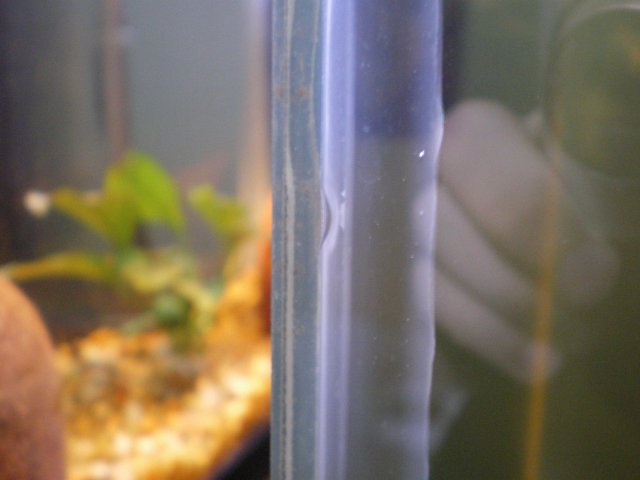Hi Lyncho,
I was scrolling through some of the older posts and came across your posting about resealing of your 55gal tank. When you mentioned the GE Window and Door silicone I questioned whether or not the silicone contained mold and mildew additives. If so remove all of it immeadiately and start over. The mold and mildew chemicals will leach out into the water and that's not good at all! You'll need to purchase 100% silicone that is food safe with no mold or mildew additives. I used GE Silicone 1 (Window/Door//Attic/Basement) that I purchased from my local Lowes store.
OK so much for that. Your main post asked about bubbles in the fresh silicone. This may have been caused by either some left over old silicone after scraping or the glass surface not cleaned properly. You must wipe the area to reseal with alcohol or lacquer thinner and then give it a good cleaning with water and vinegar to remove any alcohol or lacquer thinner residue. As other's have mentioned new silicone will not adhere to old silicone.
Next is best way I came up with to properly and securely reseal the any joints and create a smooth radius. For the most part some of the techniques have been borrowed from others who have successfully resealed their tanks.
1- Make sure all old silicone has been removed and area prepped and cleaned.
2- Find or create a spacer 3/8" wide x 8" long. I used a piece of high quality plywood and made sure all edges were clean and sharp and that the piece was flat.
3- The spacer is used to create a straight line for you to follow when applying the tape. Use Painter's masking tape 3/4" wide. At one end of the tape strip fold it over about 1/4" giving a tab to grab a hold of when removing.
4- Place spacer against the glass and start the tape tight up against the end of the spacer. As you apply the tape, about 6 inches worth, move the spacer forward and continue applying tape until you have reached the top end of the glass. If you end up with a slight glob of silicone at the end don't worry about it. It will never be seen.
5- Creating the radius is quite simple. Because we spaced our tape 3/8" from the glass we'll need a tool to make a smooth joint. Consider the 3/8" spacer as a radius. That means we need a tool with a 3/4" diameter. Go to your local hobby store and purchase a round wooden ball with a 3/4" diameter. Insert a long screw into the ball to be used as a handle. Why use a ball? First, it provides the radius and also allows you to move your hand in any position you need to comfortly continue the smooth radius of the joint. Because the ball is completely round the radius never changes. Wipe the ball clean before starting the joint.
6- After you have completed the joint give the silicone just a minute or so then start to remove the tape. Start at the end you folded over and pull the tape towards you. Don't pull straight up, slightly angle it about 45 degrees. If done correctly there should no reason why you'd have to go back and fix a bad area- of which you don't want to no matter what! If something does go south don't try to fix it. You'll have to wait until the silicone has dried and start over.
7- Leave the silicone cure for 48 hours then go ahead and fill tank one third, one third, one third. Watch between each filling that no leaks are present.
Hope this helps you and anyone else that needed info on sealing their tank.
Scott



